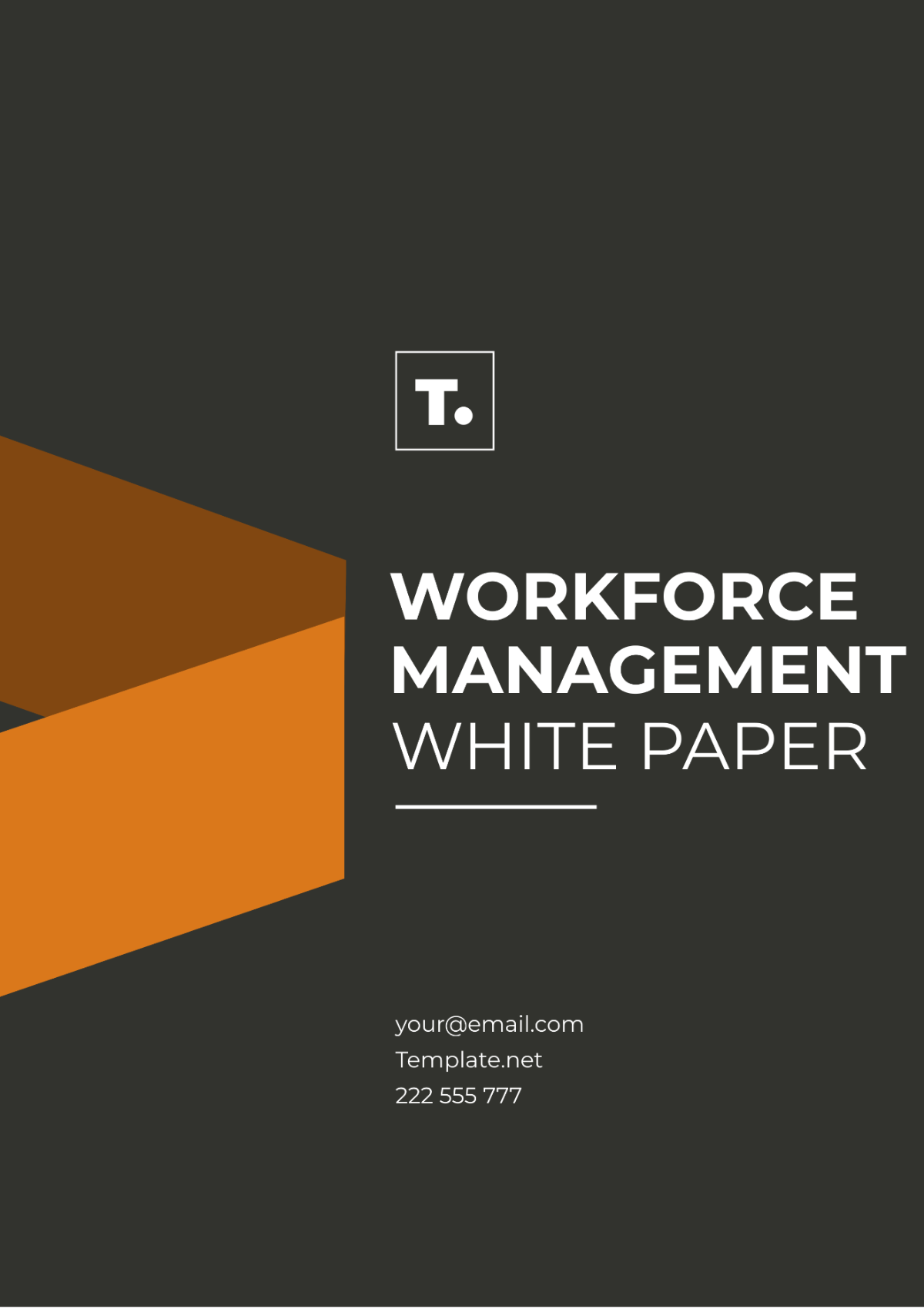Free Workforce Management White Paper

I. Executive Summary
Effective workforce management is critical for any organization's success. It encompasses a wide range of activities, including staffing, scheduling, time and attendance tracking, labor cost management, and compliance with labor laws. This white paper discusses best practices, innovative strategies, and technological solutions to help organizations manage their workforce efficiently and effectively.
II. Introduction

The modern workplace is a dynamic environment where technology, globalization, and changing workforce demographics require businesses to adapt and evolve. Organizations must have robust workforce management systems to meet these demands and remain competitive. [YOUR COMPANY NAME] offers comprehensive solutions to address these needs. This white paper provides an overview of workforce management, identifies key challenges, and offers practical solutions to address these challenges.
III. Understanding Workforce Management
Workforce management involves a series of interconnected processes that ensure the right people are in the right place at the right time, doing the right tasks. These processes include:
Breakdown of Workforce Management Focus
Staffing and Recruitment: Ensuring the organization has the talent it needs to achieve its goals.
Scheduling: Creating efficient work schedules that meet business needs while respecting employee preferences and legal requirements.
Time and Attendance: Tracking employee work hours and managing attendance to ensure accuracy and compliance.
Labor Cost Management: Controlling labor costs through efficient scheduling, overtime management, and workforce optimization.
Compliance: Ensuring compliance with labor laws, industry regulations, and company policies.
IV. Key Challenges in Workforce Management
Despite its importance, workforce management presents several challenges for organizations:
Regulatory Compliance: Keeping up with changing labor laws and regulations can be complex and time-consuming.
Employee Engagement: Engaging employees and maintaining morale can be challenging in a dynamic work environment.
Cost Control: Managing labor costs while maintaining productivity is a delicate balance.
Technology Integration: Integrating new technologies into existing systems can be difficult and costly.
V. Best Practices for Workforce Management
To overcome these challenges, organizations can adopt the following best practices:
Invest in Workforce Management Software: Implementing software solutions that automate time tracking, scheduling, and compliance can streamline workforce management processes.
Develop a Flexible Workforce: Cross-training employees and allowing flexible work arrangements can increase agility and responsiveness.
Foster a Positive Work Environment: Encouraging open communication, recognizing employee achievements, and offering professional development opportunities can boost morale and retention.
Monitor Labor Costs: Regularly reviewing labor costs and identifying areas for improvement can help control expenses.
Stay Compliant: Regularly review labor laws and ensure the organization's policies and practices are up to date.
''The first rule of management is delegation. Don't try and do everything yourself because you can't." — Anthea Turner.
VI. Leveraging Technology in Workforce Management
Technological advancements have revolutionized workforce management. Organizations can use various tools and technologies to streamline processes and improve efficiency, including:
Automated Scheduling: Tools that create optimized schedules based on business needs and employee availability.
Mobile Applications: Apps that allow employees to view schedules, request time off, and clock in/out from their mobile devices.
Advanced Analytics: Software that provides insights into workforce trends and helps organizations make data-driven decisions.
VII. Conclusion

Effective workforce management is a cornerstone of organizational success. By implementing best practices, leveraging technology, and addressing key challenges, organizations can improve efficiency, reduce costs, and foster a positive work environment. This white paper has outlined the essential components of workforce management and provided practical strategies for success.
- 100% Customizable, free editor
- Access 1 Million+ Templates, photo’s & graphics
- Download or share as a template
- Click and replace photos, graphics, text, backgrounds
- Resize, crop, AI write & more
- Access advanced editor
A Workforce Management White Paper is a comprehensive document that outlines best practices, strategies, technologies, or solutions related to workforce management. It usually contains detailed information, analysis, research findings, and expert opinions about managing an organization's workforce efficiently. The goal of a Workforce Management White Paper is to educate readers about specific issues or trends in workforce management and suggest potential solutions or best practices.





























